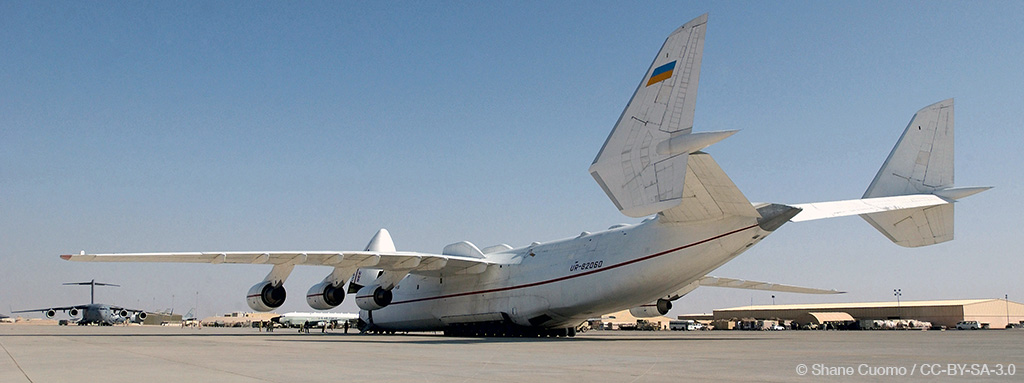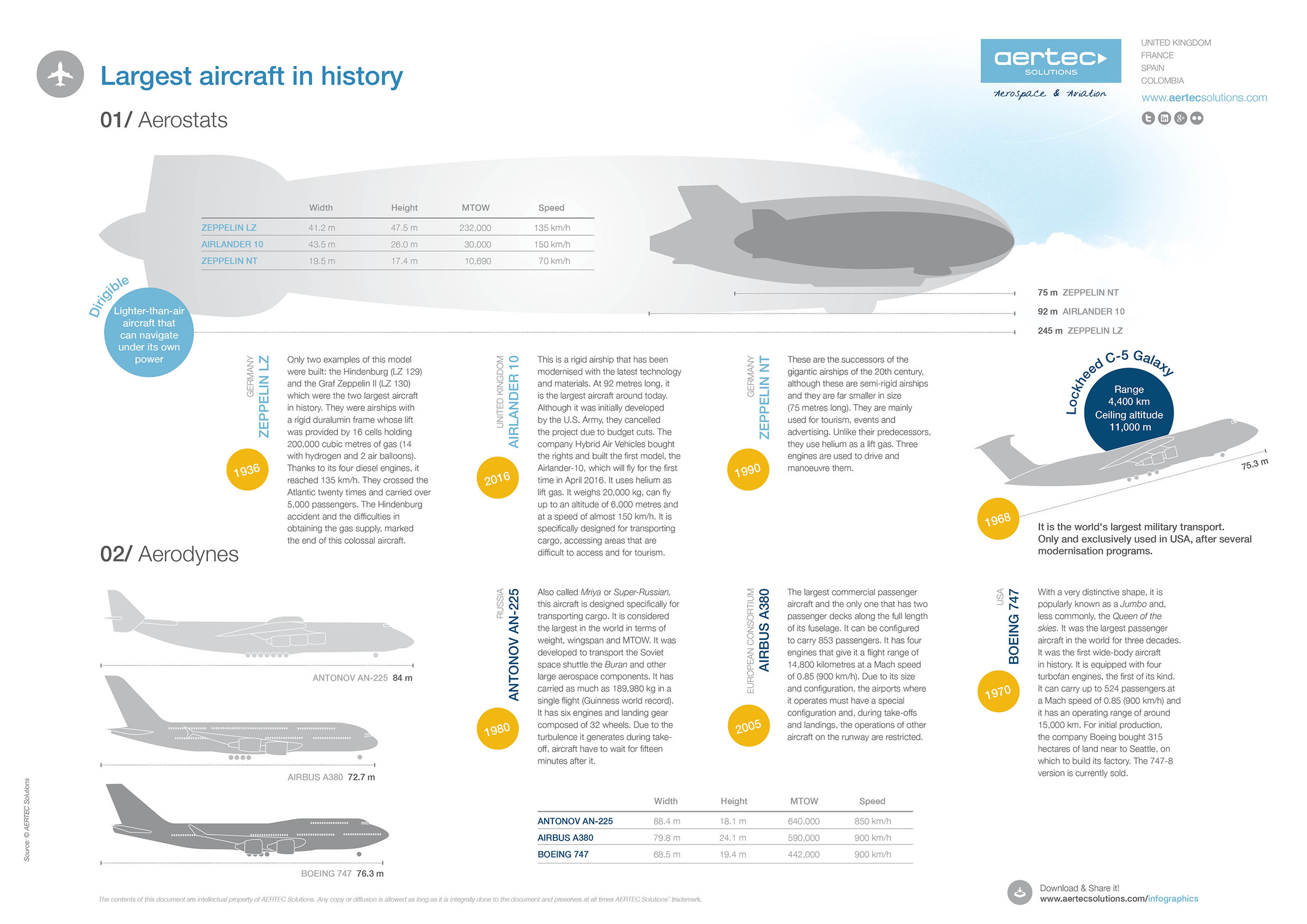
Once man had flown for the first time, he considered how to enhance this new and extraordinary invention. As of that moment, one of the priorities was to make the most of the ability to fly. Passenger and cargo transport was the most obvious use, although military supremacy in the air, the new space to control, was one of the most effective encouragements to overcome technological barriers and build more complex machines.
One of the continuing challenges in the aviation industry throughout the 20th century has been to build machines that could carry heavier cargo and cover longer distances. As a result of this, large aircraft have been developed, which one day seemed impossible they could ever take flight. In fact, some of them only got to fly a few metres. Others suffered unavoidable safety deficiencies by pushing the boundaries in terms of aerodynamics. Nonetheless there were, and still are, some truly astonishing engineering works.
There is an enormous difference between aerostats and aerodynes (heavier-than-air aircraft). The first are, undoubtedly, the aircraft with the most colossal dimensions of history, this was the result of a need for space for gas storage, mainly helium, allowing them to stay in the air. Amongst the aircraft of this group, the Hindenburg class stood out, which was 245 metres long. Currently, there are several initiatives to retrieve this type of transport especially for tourism, cargo and advertising.
The heavier-than-air aircraft, which are able to generate the lift mechanism on their own, are the ruling class in the current sky, especially the fixed-wing ones (conventional aircraft). They are used interchangeably for cargo and passenger transport, as well as military applications. Although some models, such as the Antonov An-225, were designed specifically for transport of goods. Without reaching the size of the aerostats, they are also colossal. Have you ever been next to one of these aircraft? If so, you will have noticed.
In this infographic we show some of the largest aircraft in history, contrasting their different shapes in order to compare their overall dimensions. We hope you enjoy it.
Source: Produced internally.
The contents of this document are intellectual property of AERTEC Solutions. Any copy or diffusion is allowed as long as it is integrally done to the document and preserves at all times AERTEC Solutions’ trademark.


